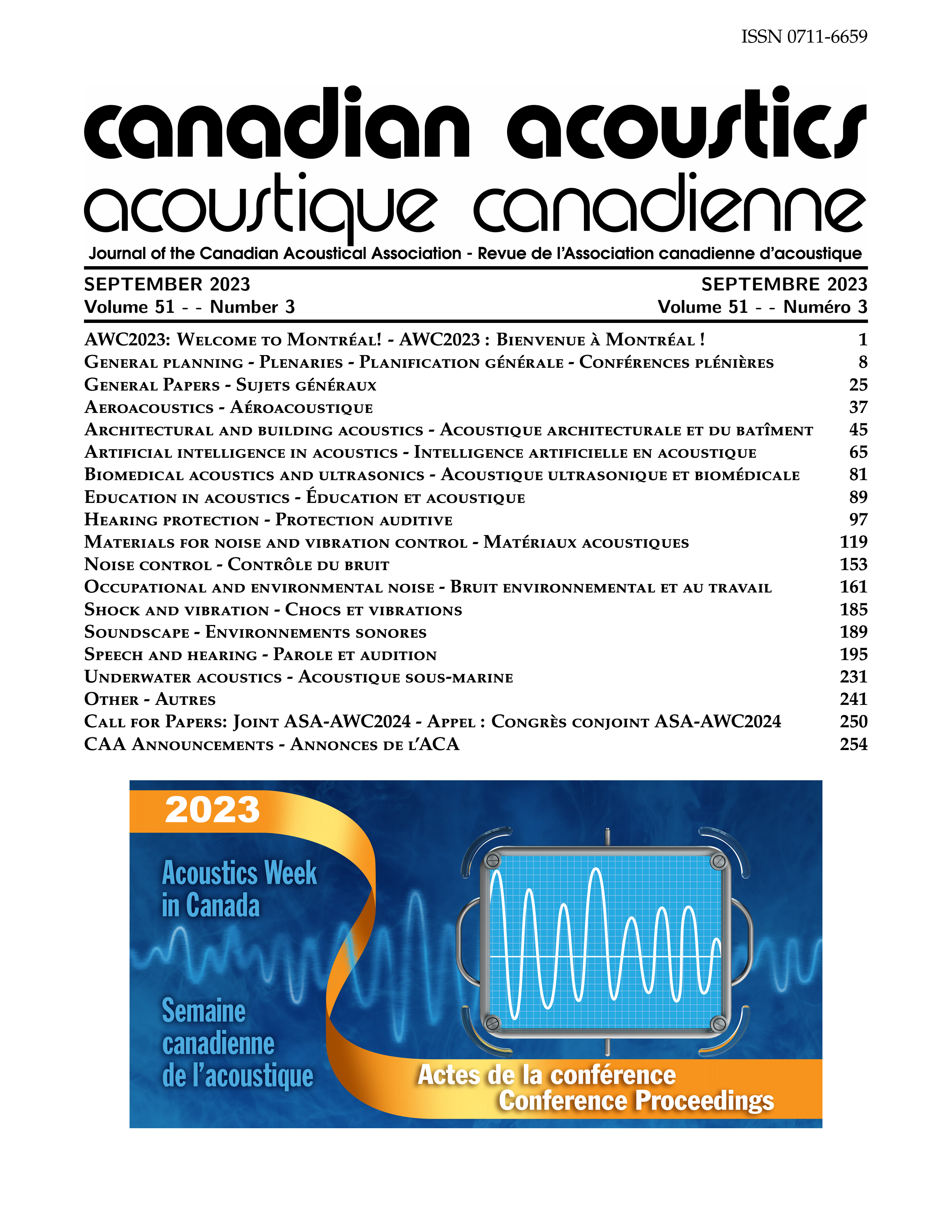Numerical Analysis of Energy Density Distribution in the Human Lungs Under Low-Frequency Acoustic Excitation
Résumé
According to the 2018 annual report of Canada, 3.8 million people are living with asthma, and 2 million are living with chronic obstructive pulmonary disease (COPD), both of which can impact a person's ability to breathe because of excessive mucus accumulation in bronchioles. However, most people with COPD can achieve reasonable symptoms to control and quality of life with the help of an acoustic airway clearance device, which supplies vibrations to act on bronchial mucus's viscoelastic, shear-thinning, and thixotropic properties, liquefying it to ease expectoration. Yet since, no 3D complex and whole thorax geometry is used to understand and/or optimize the lungs' behaviour numerically. This study aims at investigating the human lungs under airway clearance therapy (ACT) with a 3D validated realistic computed tomography-based numerical finite element analysis CT/FEA of the human thorax. We study the lungs under ACT in the frequency domain (5-100 Hz) using COMSOL 6.1 Multiphysics®. Results show that the lungs are most affected at approximately 30 Hz, which is consistent with former experimental studies. Furthermore, the mean value of the strain energy density follows the mean value of kinetic energy density by 32 Hz. Therefore, this study provides valuable insights into optimizing treatment for respiratory conditions.Fichiers supplémentaires
Publié-e
Comment citer
Numéro
Rubrique
Licence
Author Licensing Addendum
This Licensing Addendum ("Addendum") is entered into between the undersigned Author(s) and Canadian Acoustics journal published by the Canadian Acoustical Association (hereinafter referred to as the "Publisher"). The Author(s) and the Publisher agree as follows:
-
Retained Rights: The Author(s) retain(s) the following rights:
- The right to reproduce, distribute, and publicly display the Work on the Author's personal website or the website of the Author's institution.
- The right to use the Work in the Author's teaching activities and presentations.
- The right to include the Work in a compilation for the Author's personal use, not for sale.
-
Grant of License: The Author(s) grant(s) to the Publisher a worldwide exclusive license to publish, reproduce, distribute, and display the Work in Canadian Acoustics and any other formats and media deemed appropriate by the Publisher.
-
Attribution: The Publisher agrees to include proper attribution to the Author(s) in all publications and reproductions of the Work.
-
No Conflict: This Addendum is intended to be in harmony with, and not in conflict with, the terms and conditions of the original agreement entered into between the Author(s) and the Publisher.
-
Copyright Clause: Copyright on articles is held by the Author(s). The corresponding Author has the right to grant on behalf of all Authors and does grant on behalf of all Authors, a worldwide exclusive license to the Publisher and its licensees in perpetuity, in all forms, formats, and media (whether known now or created in the future), including but not limited to the rights to publish, reproduce, distribute, display, store, translate, create adaptations, reprints, include within collections, and create summaries, extracts, and/or abstracts of the Contribution.


